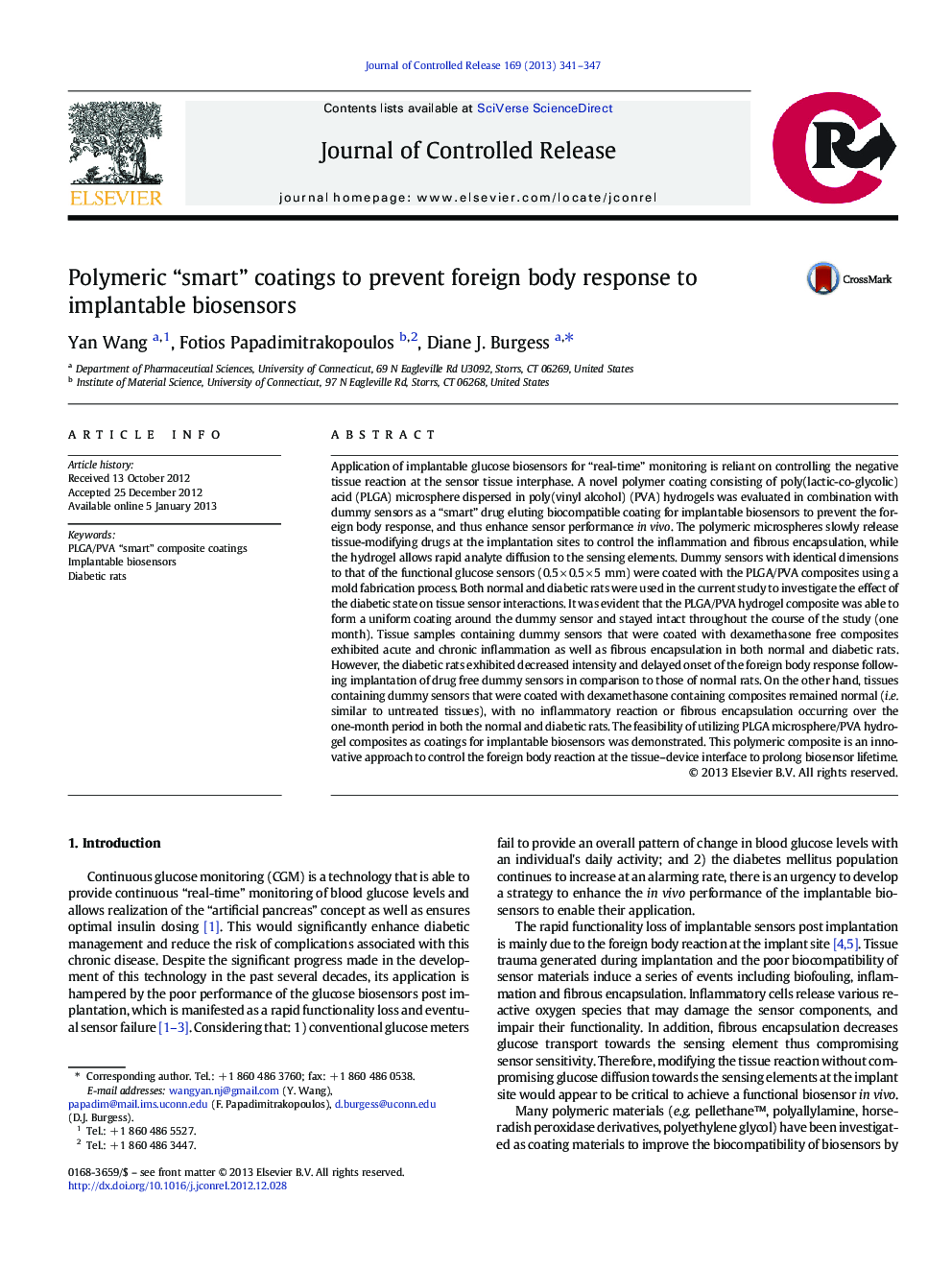| Article ID | Journal | Published Year | Pages | File Type |
|---|---|---|---|---|
| 1424174 | Journal of Controlled Release | 2013 | 7 Pages |
Application of implantable glucose biosensors for “real-time” monitoring is reliant on controlling the negative tissue reaction at the sensor tissue interphase. A novel polymer coating consisting of poly(lactic-co-glycolic) acid (PLGA) microsphere dispersed in poly(vinyl alcohol) (PVA) hydrogels was evaluated in combination with dummy sensors as a “smart” drug eluting biocompatible coating for implantable biosensors to prevent the foreign body response, and thus enhance sensor performance in vivo. The polymeric microspheres slowly release tissue-modifying drugs at the implantation sites to control the inflammation and fibrous encapsulation, while the hydrogel allows rapid analyte diffusion to the sensing elements. Dummy sensors with identical dimensions to that of the functional glucose sensors (0.5 × 0.5 × 5 mm) were coated with the PLGA/PVA composites using a mold fabrication process. Both normal and diabetic rats were used in the current study to investigate the effect of the diabetic state on tissue sensor interactions. It was evident that the PLGA/PVA hydrogel composite was able to form a uniform coating around the dummy sensor and stayed intact throughout the course of the study (one month). Tissue samples containing dummy sensors that were coated with dexamethasone free composites exhibited acute and chronic inflammation as well as fibrous encapsulation in both normal and diabetic rats. However, the diabetic rats exhibited decreased intensity and delayed onset of the foreign body response following implantation of drug free dummy sensors in comparison to those of normal rats. On the other hand, tissues containing dummy sensors that were coated with dexamethasone containing composites remained normal (i.e. similar to untreated tissues), with no inflammatory reaction or fibrous encapsulation occurring over the one-month period in both the normal and diabetic rats. The feasibility of utilizing PLGA microsphere/PVA hydrogel composites as coatings for implantable biosensors was demonstrated. This polymeric composite is an innovative approach to control the foreign body reaction at the tissue–device interface to prolong biosensor lifetime.
Graphical abstractFigure optionsDownload full-size imageDownload high-quality image (175 K)Download as PowerPoint slide
